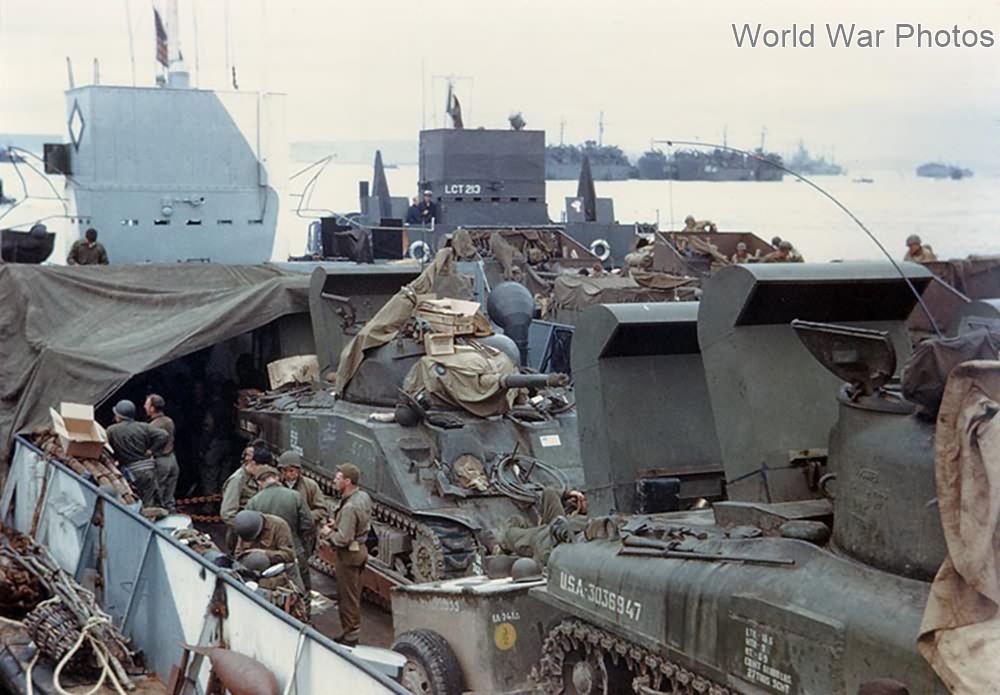Deep-Wading Tanks in Operation Overlord
Deep-wading tanks were a critical element in the success of Operation Overlord, allowing armored forces to be deployed directly onto beaches where landing craft could not reach the shore due to steep gradients or other obstacles. The development of deep-wading tanks was a result of earlier amphibious operations, particularly in the North African and Mediterranean campaigns from 1942 to 1944. Both British and American forces independently developed these systems, though they shared ideas and techniques to improve the effectiveness of their tanks in amphibious assaults.
Development and Design
Origins and Early Use:
- The concept of deep-wading tanks originated from the need to land armored vehicles on beaches during amphibious operations. During the North African and Mediterranean campaigns, the British and Americans developed initial versions of these tanks, which could be deployed from landing craft in relatively deep water.
- Deep-wading kits were designed to waterproof the tanks as much as possible, protecting the engine and internal components from water intrusion. This involved sealing hatches and other openings and applying waterproofing compounds to the hull.
Technical Features:
- Deep-Wading Trunks: The most distinctive feature of deep-wading tanks was the addition of deep-wading trunks, which were extensions fitted to the air intakes and exhausts of the tank. These trunks allowed the tank to operate in water up to the turret roof, drawing in air from above the water level and expelling exhaust gases without flooding the engine compartment.
- Waterproofing: The tanks were also thoroughly waterproofed, with particular attention to sealing vulnerable areas like hatches, gun mantlets, and vision ports. The waterproofing materials and methods varied, but they were crucial in ensuring that the tanks could function after wading through water.
Adaptation for Operation Neptune:
- As preparations for D-Day intensified, the need for reliable deep-wading tanks became evident. The tanks were expected to wade ashore from Landing Craft Tanks (LCTs) in water depths that might cover the turret, necessitating robust waterproofing and effective wading trunks.
- British and American forces both developed their deep-wading kits, often manufactured locally to suit the specific needs of their units. While these kits differed in detail, the underlying principles were the same, focusing on waterproofing and extending air intakes and exhausts.
Operation Overlord
Role on D-Day:
- During the Normandy landings on June 6, 1944, deep-wading tanks were deployed on several beaches, particularly where the gradient of the shore prevented LCTs from directly landing tanks on dry ground. These tanks were crucial in providing immediate armored support to infantry units as they advanced inland.
- The deep-wading tanks typically consisted of Sherman tanks fitted with the necessary waterproofing and wading trunks. They were among the first vehicles to come ashore, tasked with securing beachheads and supporting the initial assault waves.
Challenges and Effectiveness:
- Despite their thorough preparation, deep-wading tanks faced significant challenges during the landings. Rough seas, strong currents, and the chaotic nature of the beach assaults led to the loss of some tanks before they could reach shore. However, many tanks successfully waded ashore and played a vital role in overcoming German defenses.
- The effectiveness of deep-wading tanks was evident in their ability to provide immediate firepower on the beaches, helping to neutralize enemy positions and secure landing zones for follow-up forces.
